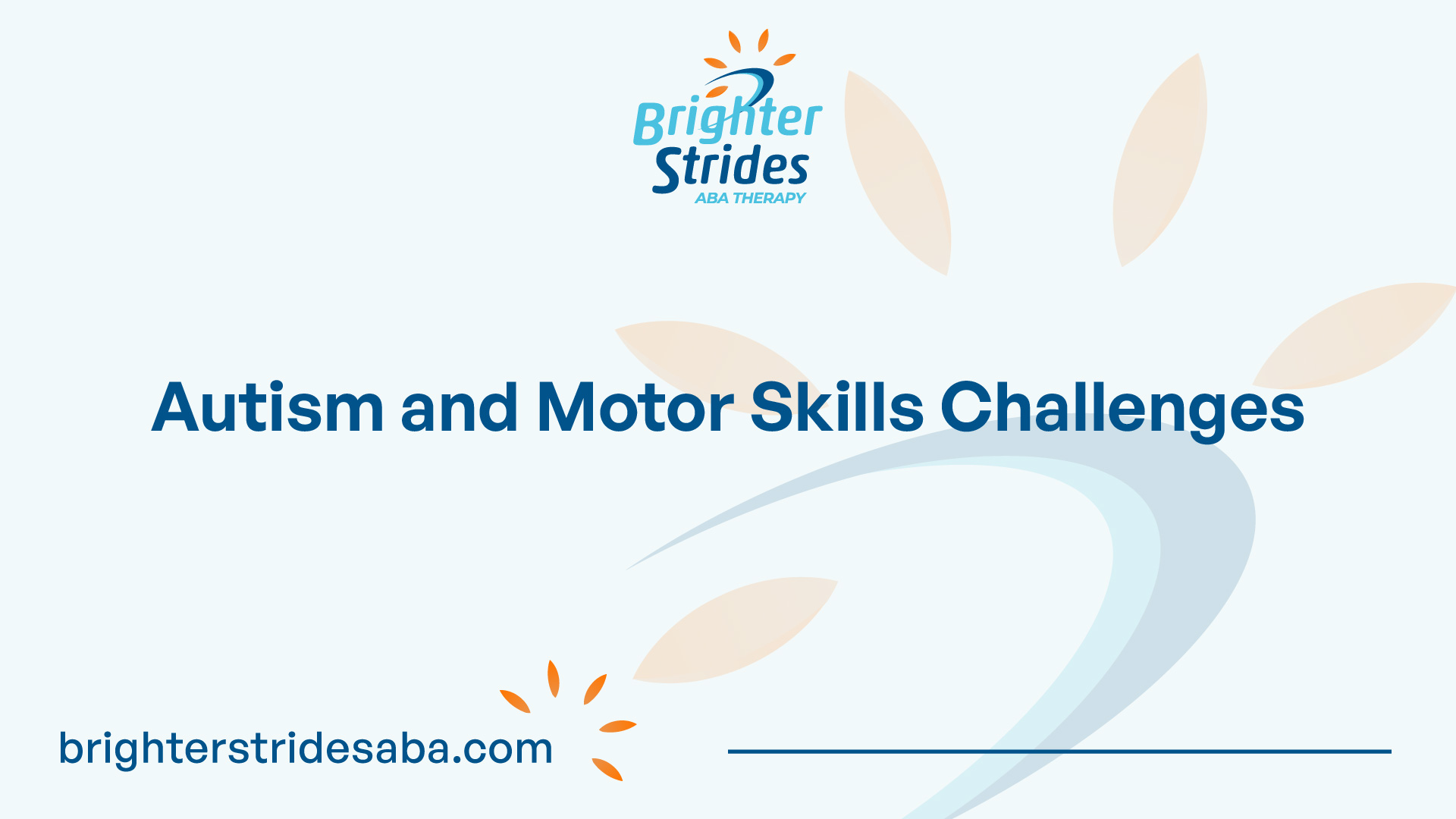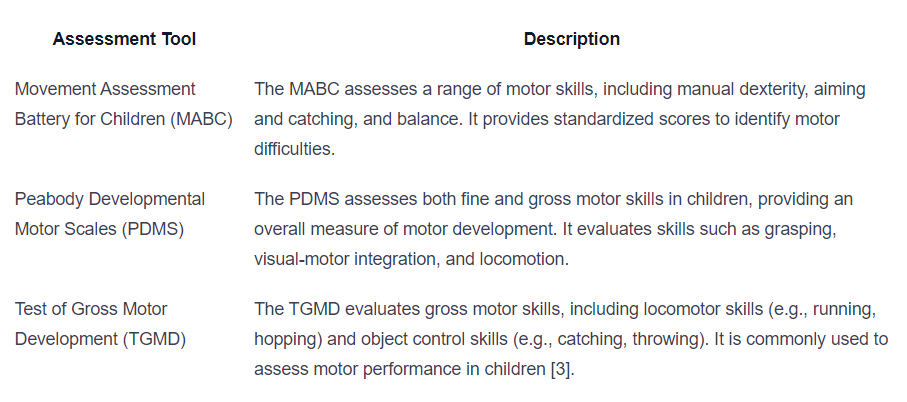Understanding Motor Skills in Autism
Motor skills play a crucial role in the development and daily life of individuals with autism spectrum disorder (ASD). Motor impairment is one of the most consistent markers of ASD, alongside sociocommunicative difficulties. These motor difficulties can occur in the early years of life, even preceding social-communication deficits, and tend to increase with age, limiting social interaction opportunities.

Definition and Importance of Motor Skills
Motor skills encompass the ability to coordinate movements and perform tasks that involve the use of muscles and body control. They can be broadly categorized into two types: fine motor skills and gross motor skills. Fine motor skills involve precise movements of the hands, fingers, and other small muscles, while gross motor skills involve larger muscle groups and whole-body movements.
In individuals with autism, motor difficulties are often observed, particularly in fine motor skills. Fine motor skills are crucial for activities such as writing, drawing, using utensils, and manipulating objects. These skills are important in daily life and can impact academic performance, social interactions, and independent functioning.
Impact of Motor Skills on Daily Life
The challenges faced by individuals with autism in motor skill development can have significant impacts on daily life. Fine motor difficulties are often associated with challenges in hand-eye coordination, sensory processing, academic performance, and social interactions. Tasks that require fine motor skills, such as using scissors, drawing shapes, and stacking blocks, may be more challenging for individuals with autism compared to their neurotypical peers.
Gross motor difficulties can also affect daily activities. These challenges can manifest as issues with posture, coordination, and motor planning. Gross motor skills are essential for activities such as running, jumping, and playing sports. Difficulties in these areas can impact physical fitness, participation in recreational activities, and overall well-being.
It is important to recognize the impact of motor skills on the daily life of individuals with autism. Addressing motor skill challenges through appropriate interventions and support can enhance their overall functioning and quality of life. The next sections will delve into the assessment, factors influencing motor skills, challenges faced, and interventions available to improve motor skills in individuals with autism.
Assessing Motor Skills in Autism
Assessing motor skills in individuals with autism is crucial for understanding their developmental progress and identifying any potential delays or difficulties. Various tools and assessments are available to evaluate motor development and detect motor delays at an early stage.
Tools for Assessing Motor Development
There are several tools and assessments used by professionals to evaluate motor development in individuals with autism. These assessments typically focus on both gross motor skills (larger muscle movements) and fine motor skills (smaller, more precise movements). Some commonly utilized tools include:

These tools, along with other assessments, provide valuable insights into an individual’s motor abilities and help professionals tailor interventions and support based on their specific needs.
Early Detection of Motor Delay
Research suggests that motor delay can be detected as early as 14 months in children with autism [4]. Motor difficulties in autistic children can manifest in the first years of life, sometimes even preceding social-communication deficits, and tend to increase with age, limiting social interaction opportunities. It is important to monitor motor development from infancy to identify potential delays or atypical patterns.
Early detection of motor delay is crucial for providing early intervention and support. Caregivers, parents, and professionals should observe developmental milestones and consult with healthcare providers if any concerns arise. Identifying motor delays at an early stage allows for targeted interventions and strategies to address specific motor challenges and promote optimal development.
By utilizing appropriate tools and assessments, professionals can gain a comprehensive understanding of an individual’s motor skills and identify any areas that may require additional support. Early detection and intervention play a vital role in promoting motor skill development and enhancing overall quality of life for individuals with autism.
Factors Influencing Motor Skills
Motor skills in individuals with autism spectrum disorder (ASD) are influenced by various factors, including genetic and brain connectivity factors as well as the relationship between motor and social development.
Genetic and Brain Connectivity Factors
Motor impairment is one of the most consistent markers of autism spectrum disorder (ASD). Research suggests that motor abnormalities are present in individuals with ASD and may have implications for cognitive and social development. Converging evidence indicates that early motor difficulties could be one of the earliest identifiable manifestations of ASD, occurring in the first years of life and even preceding social-communication deficits.
The development of motor skills in individuals with autism relies on forming intricate connections between different brain parts to link sensory information with environmental cues [3]. Genetic factors play a role in shaping these brain connections, contributing to the motor challenges observed in individuals with ASD.
While the exact genetic and brain connectivity factors underlying motor difficulties in autism are still being studied, it is evident that they play a significant role in the development and manifestation of motor skills in individuals with ASD.
Relationship Between Motor and Social Development
Motor difficulties in autistic children can occur in the first years of life, even preceding social-communication deficits. These motor challenges tend to increase with age and can limit social interaction opportunities. Research consistently shows that motor difficulties are one of the most consistent markers for ASD, alongside socio-communicative difficulties.
Fine motor skills, in particular, are often affected in individuals with ASD, impacting daily activities such as writing, drawing, using utensils, and manipulating objects. Fine motor difficulties in autism are associated with challenges in hand-eye coordination, sensory processing, academic performance, and social interactions. These challenges can be distinct from general cognitive impairments and represent a specific area of difficulty for individuals with ASD.
The relationship between motor and social development is complex. Motor skills are intertwined with social interactions, as they enable individuals to engage in activities with peers and navigate their environment. Difficulties in motor skills can impact social participation and limit opportunities for social engagement in individuals with ASD.
Understanding the genetic and brain connectivity factors involved in motor skills development and recognizing the interplay between motor and social development can help inform interventions and support strategies for individuals with autism. By addressing motor challenges early and providing appropriate interventions, individuals with ASD can enhance their motor skills and potentially improve their overall social and cognitive development.
Challenges in Motor Skills Development
Motor skill development in individuals with autism can be challenging, and it is one of the most consistent markers of autism spectrum disorder (ASD) alongside socio-communicative difficulties. These motor difficulties may occur in the early years of life and tend to increase with age, impacting social interaction opportunities. Let’s delve into two specific areas of motor skill challenges: fine motor skill difficulties and gross motor skill impairments.
Fine Motor Skill Difficulties
Research suggests that fine motor difficulties are a common feature in individuals with autism. Fine motor skills involve the coordination of small muscles in the hands and fingers. Individuals with autism may face challenges in tasks that require precise control and coordination, such as writing, drawing, using utensils, and manipulating objects.
These difficulties in fine motor skills are often linked to challenges in hand-eye coordination, sensory processing, and academic performance. They can impact daily activities, including self-care tasks like buttoning clothes, tying shoelaces, and using cutlery [2]. It is important to note that fine motor difficulties in autism are not solely related to general cognitive impairments, indicating that they represent a distinct challenge.
Gross Motor Skill Impairments
Gross motor skills involve the coordination and control of large muscle groups, facilitating activities such as running, jumping, and balancing. Research and clinical observations indicate that many individuals with autism experience delays or atypical motor patterns in both gross motor skills and coordination.
Difficulties in gross motor skills can manifest in challenges with posture, coordination, and motor planning. These impairments can impact activities such as playing sports, participating in physical education classes, and engaging in outdoor activities that require adequate coordination and balance.
Addressing and supporting the development of both fine and gross motor skills is crucial for individuals with autism. By providing targeted interventions and accommodations, it is possible to improve motor skill abilities and enhance daily functioning for individuals on the autism spectrum.
Interventions for Improving Motor Skills
When it comes to addressing motor skill challenges in individuals with autism, targeted interventions can play a crucial role in enhancing their overall motor development. In this section, we will explore two key interventions: occupational therapy for fine motor skills and exercise interventions for gross motor skills.
Occupational Therapy for Fine Motor Skills
Occupational therapy (OT) is a vital intervention for assessing and improving fine motor skills in individuals with autism. OT professionals work closely with individuals to develop and enhance their ability to perform everyday tasks that require fine motor control and coordination. These tasks may include grasping objects, manipulating small items, buttoning clothes, writing, and more.
The focus of occupational therapy is to address specific fine motor difficulties and provide targeted interventions to enhance motor planning, dexterity, and hand-eye coordination. OT sessions may involve engaging activities that target specific fine motor skills, such as using manipulative toys, puzzles, and arts and crafts materials. These activities are designed to promote fine motor control, finger strength, and precision.
Early identification and intervention are crucial for maximizing the benefits of occupational therapy. By addressing fine motor challenges early on, individuals with autism can develop the skills necessary to navigate daily tasks and improve their overall functioning and quality of life.
Exercise Interventions for Gross Motor Skills
Gross motor skills refer to the ability to use large muscle groups for activities such as walking, running, jumping, and coordination of body movements. Exercise interventions can greatly benefit individuals with autism by improving their overall physical fitness, coordination, balance, and motor planning.
Engaging in regular physical activity and structured exercise programs can help individuals with autism develop and enhance their gross motor skills. These interventions may include activities such as swimming, biking, yoga, dance, and team sports. By participating in these activities, individuals can improve their muscle strength, endurance, coordination, and balance.
Exercise interventions can be tailored to the specific needs and abilities of individuals with autism. Structured routines, visual supports, and clear instructions can help individuals with autism feel more comfortable and engaged in physical activities. Incorporating sensory-friendly elements and providing opportunities for repetition can also enhance the effectiveness of these interventions.
It’s important to note that individuals with autism may have varying levels of physical ability and preferences. Therefore, it’s essential to individualize exercise interventions to meet their unique needs and interests. By providing a supportive and inclusive environment, individuals with autism can experience the benefits of exercise interventions, such as improved gross motor skills, overall physical health, and well-being.
Incorporating occupational therapy for fine motor skills and exercise interventions for gross motor skills can significantly contribute to the motor skill development of individuals with autism. These interventions, when implemented with appropriate strategies and regular practice, can help individuals enhance their motor capabilities, overcome challenges, and improve their overall quality of life.
Technology in Motor Skill Development
In recent years, technology has played a significant role in supporting motor skill development in individuals with autism. Two notable interventions that have shown promise in improving motor skills are robot-assisted training and virtual reality interventions.
Robot-Assisted Training
Robot-assisted training involves the use of robots as interactive tools to facilitate motor skill development in individuals with autism. These robots are designed to engage and guide individuals through various motor tasks, providing real-time feedback and assistance. By using robots, individuals with autism can practice and refine their motor skills in a structured and controlled environment.
Robot-assisted training offers several advantages. Firstly, robots can provide consistent and repetitive practice, which is crucial for motor skill acquisition. The interactive nature of these robots can also increase motivation and engagement, making the training sessions more enjoyable for individuals with autism.
Studies have shown that robot-assisted training can lead to significant improvements in motor skills among individuals with autism. These improvements extend to both fine motor skills, such as hand-eye coordination and finger dexterity, as well as gross motor skills, including balance and coordination. By targeting fundamental motor skills, robot-assisted training can have a positive impact on the overall motor abilities of individuals with autism.
Virtual Reality Interventions
Virtual reality (VR) interventions have emerged as another promising tool for enhancing motor skills in individuals with autism. VR technology creates an immersive and interactive environment that allows individuals to engage in simulated activities and tasks. This technology can be customized to provide tailored motor skill training programs.
Virtual reality interventions offer several benefits. They provide a safe and controlled environment for individuals to practice motor skills without the potential risks associated with real-world settings. VR interventions can also be adapted to meet the specific needs and abilities of each individual, allowing for personalized training experiences.
Research has shown that virtual reality interventions can improve both fine and gross motor skills in individuals with autism. These interventions have been effective in enhancing hand-eye coordination, motor planning, and body awareness. Additionally, virtual reality can create a motivating and engaging experience, which can increase participation and enjoyment during motor skill training sessions.
By leveraging the power of technology, both robot-assisted training and virtual reality interventions offer innovative approaches to address motor skill challenges in individuals with autism. These interventions can provide a supportive and stimulating environment for individuals to develop and refine their motor skills, ultimately enhancing their overall motor abilities and potentially improving their social interaction opportunities.

 We've just released an article!
Check out our blog!
We've just released an article!
Check out our blog!



